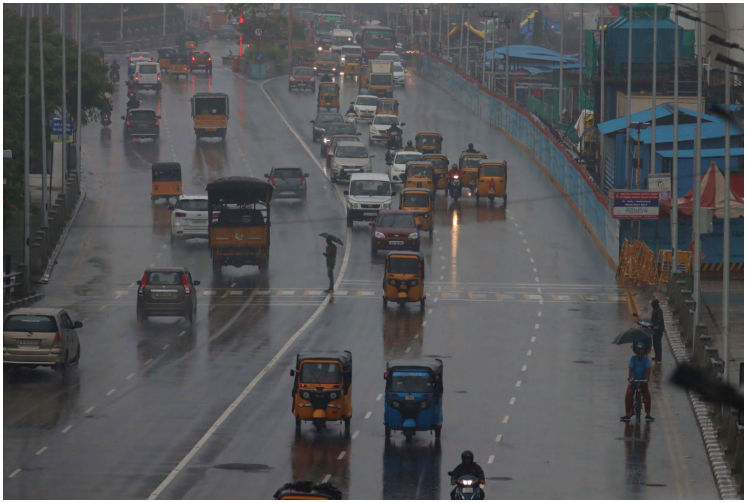Would you describe relocating from one state to another in India as cumbersome? Hardly. However, a differential road tax regime makes it so. Imagine the ordeal one has to go through while moving to a different state with the added burden of taking their vehicle along.
For that reason, some choose to sell their vehicles in the state of domicile or residence and purchase a new one in the state they are migrating to. Transferring your vehicle to a new state leads to a huge tribulation on the part of the individual as they have to cross a series of hurdles to re-register it by paying road tax again and obtaining a refund of the already paid road tax from the RTOs (Regional Transport Office) in the respective states.
The burden of compliance through endless paperwork, increased costs, lack of awareness, and investment of substantial time and effort makes this process onerous and surely, cumbersome. As an aspirational country, the ownership of personal motor vehicles in India has increased rapidly in the last decade. There is no denying that post the implementation of the GST (Goods & Services Tax) regime, tax structure in India has homogenized considerably.
However, Road Tax, which is levied by the states, makes the onroad prices of vehicles differ widely throughout the country, acting as a roadblock in the path to achieve seamless mobility. Each state has laid down their own parameters on how they want to collect road tax, which can vary from 2% to 18% of the cost of the vehicle.
The on road prices thus differ not just from state to state but even by vehicle category, type of vehicle, engine capacity, number of seats, length of the vehicle, its price, and the location of registration. People thus resort to purchasing cars in another state having road tax at the lower end of the spectrum, rather than their state of domicile or residence.
Considering roads as quasi public goods helps us understand the need for a road tax. What poses problems is the differential tax structure. Each state has its own formula for arriving at road tax, leading to different prices of the same vehicle in different states. The talks of a Uniform Road Tax structure were first heard during a meeting of Group of Ministers (GoM) on transport set up by the Ministry of Road Transport and Highways in 2018 but were halted due to resounding opposition by certain states that felt it would take away their discretion and freedom to tax and earn revenue.
Owning a vehicle is a costly affair, and a vehicle owner wanting to move to another state with their vehicle adds to the costs substantially. The multiplicity of rules and regulations throughout the country incentivises people to not comply, which ends up hurting not just the revenue that the government expects to generate but also the automobile industry.
Tax evasion, multiple instances of road tax payments when a user changes their state of residence, difficulty in obtaining a refund of road tax, as well hassle in buying and selling of used vehicles is a common occurrence with the present road tax structure.
The BH (Bharat) series number plates is one of the commendable initiatives by the Ministry of Road Transport and Highways that enables private vehicle owners to move to any part of the country without the need for re-registration, but those eligible for the same include employees of union and state governments, administrative services, defense personnel and private sector employees working in offices across more than four states or union territories.
BH series not only attracts a higher road tax, but is also not available for pre-registered or commercial vehicles. The need for ease of mobility and relocation cannot be stressed enough. Thus, it becomes pertinent for the government to modernize and streamline the road tax system by introducing a uniform tax across the country.
One Bharat, One Road Tax regime is the panacea for resolving the existing anomalies in this ecosystem. Such a regime would require careful planning, sustained coordination, and conscious consensus building among all the stakeholders involved. The situation involves addressing numerous complexities, especially rationalizing the existing tax structures and revenue distribution between the union and the state governments as well as among the states themselves.
What it would do is provide a unified framework, making the masses understand and comply with the simplified road tax regulations, irrespective of where they are situated in the country. For the union government, a unified road tax regime ensures ease of compliance.
For the states, it assures sustained flow of revenues for the purpose of infrastructure, construction, and maintenance of roads. For the automobile industry, it provides a sense of security through establishment of a predictable regulatory framework across the country.
And most importantly, for the masses, it guarantees ease of mobility and living. The workforce of India of the 21st century is always on the move, looking for better opportunities wherever they are available. Enhancing their mobility should be the prime motivation for moving towards a single and uniform road tax regime across the country.
The One Bharat One Road Tax regime would untangle the complexities of the current road tax system, ensure tax compliance, ultimately promoting the economic growth of India.
The Authors are CEO and Associate -Public Policy & Research at Indiatech.org (TSIA) respectively

